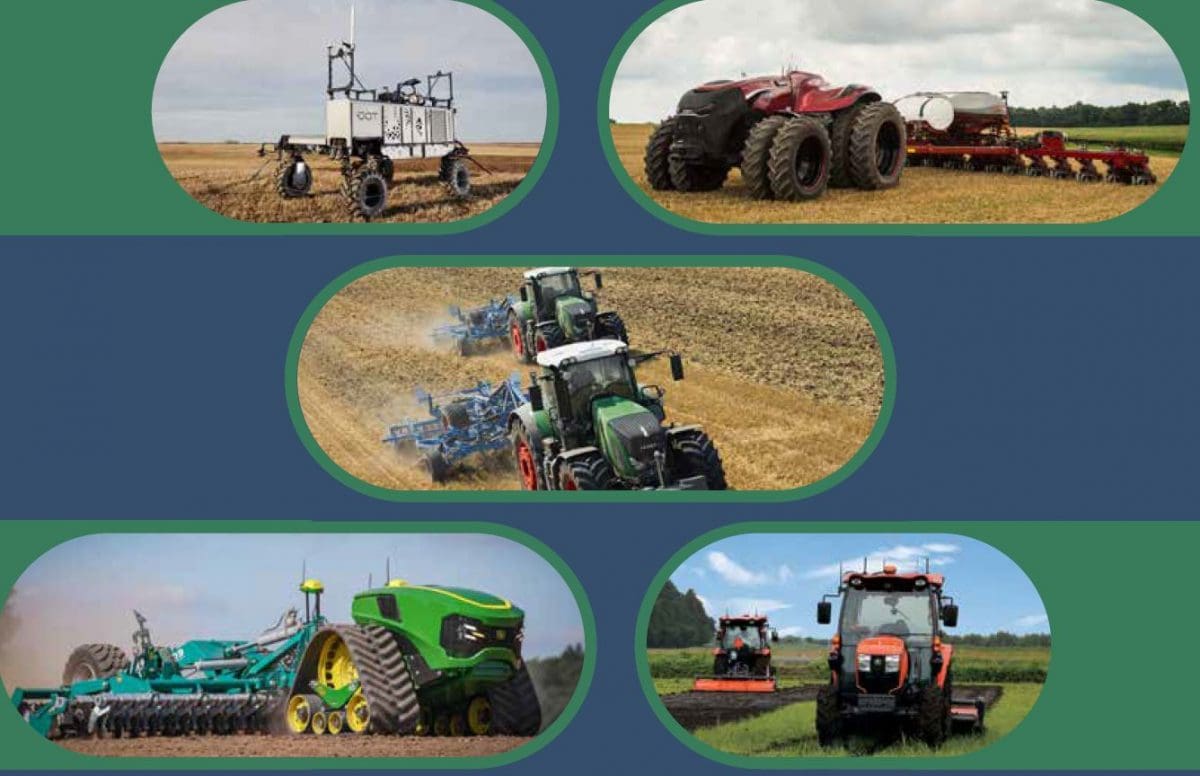
GRAIN Producers Australia (GPA) has started talks with the Western Australia Government to seek formal endorsement and adoption of a new Code of Practice (COP) that will help drive the future use of autonomous farm vehicles and machinery on farms throughout Australia.
GPA chair, Andrew Weidemann, said the ‘Code of Practice for Agricultural Mobile Field Machinery with Autonomous Functions in Australia’ had been developed in a joint project working with the Tractor and Machinery Association of Australia (TMA) and Society of Precision Agriculture Australia (SPAA).
Mr Weidemann said the code was an exciting and proactive initiative that was designed to enable future access to a rapidly emerging technology that would deliver productivity gains for growers and industry.
“After extensive industry consultations, the code has been finalised and we’re now engaging in discussions with the WA Government asking them to formally endorse and adopt it,” he said.
“The process of drafting and writing the code has been led by farm technology expert, Dr Rohan Rainbow, working on contract to GPA and his expertise is invaluable to the project’s success.
“We are starting a national roll-out by seeking the WA Government’s endorsement and adoption, given the vital importance of their early involvement and guidance; providing a design template for GPA to work from, with a similar code having already been adopted for the mining sector.
“Endorsing this code will help enable the accelerated adoption of this exciting technology in Australia which has massive potential to boost the productivity and the profitability of our grain growers who contribute up to $12 billion already to the national economy each year.”
Support for autonomous development
Dr Rainbow said improved safety standards, hazard controls and risk management procedures were at the forefront of the code’s operations, along with ensuring autonomous machinery use had practical application on-farm.
“Another priority has been the need to ensure industry’s compliance with environmental stewardship and the use of autonomous machinery also improves pesticide use,” he said.
“The code will support the development of a significant and exciting commercial market in Australia for the manufacturing and distribution of this technology, putting farmer and industry needs at the forefront of product development.”
Dr Rainbow said the code’s implementation would encourage and facilitate the adoption of automated tractors and machinery and new investment opportunities.
He said it also aligned with the requirements of relevant government safety regulations, being purposefully designed to assist machinery users with meeting their legislative obligations under the Safe Work Australia’s Model Work Health and Safety Laws.
The code will also support application of the Agricultural and Veterinary Chemicals Code Act 1994, which is the supporting legislation for the Agricultural Pesticides and Veterinary Management Authority.
It will also serve to standardise the approach to machinery automation for manufacturers, importers, distributors, dealers and producers.
Encouraging autonomous adoption
WAFarmers Grains Council president and Esperance farmer, Mic Fels, said the code presented a great opportunity for WA to be the pace setter in adopting autonomous machinery, while helping to enable tech-based employment in both the farming and manufacturing sectors.
“Western Australian farmers have always had a strong reputation for early uptake and adoption of farming technologies that can help boost their profitability and performance,” he said.
“We’re already seeing reports of some movement in this space, with smaller autonomous machinery that can spot spray weeds in paddocks during summer. Other growers will be watching with great interest, to see how this can translate into dollars and cents on their own farms; especially moving towards scaling up to the future use of bigger driverless machinery at seeding and harvesting.”
SPAA president Frank D’Emden said SPAA was Australia’s leading precision agriculture extension organisation and trusted source of independent AgTech information, and was very excited to support GPA and TMA in the development and ultimate government endorsement of the Australian code.
“It is very important to have an accepted COP to guide and inform legislation to support the successful and responsible adoption of autonomous technology within the Australian farming community,” he said.
TMA executive director, Gary Northover, said a recently released report analysed the global market for autonomous farm equipment and estimated its value at US$77.8 billion in the year 2020 (AUD$106b).
He said this analysis also projected the market to reach US$199.8b (AUD$272b) by 2027, growing at a CAGR of 14.4 per cent over the period 2020-2027.
“This increase is forecast to be driven by growing government and private sector investments in intelligent agriculture, as the future of sustainable farming and Australia’s initial share of this forecast expected to be significant,” he said.
Source: GPA
Read Code of Practice report

HAVE YOUR SAY